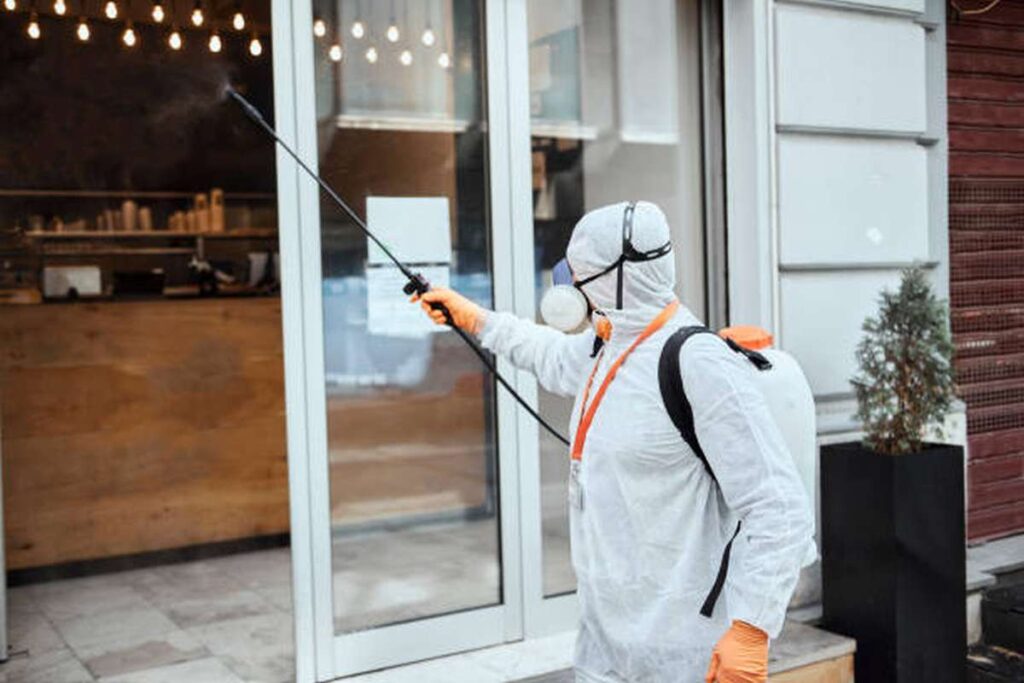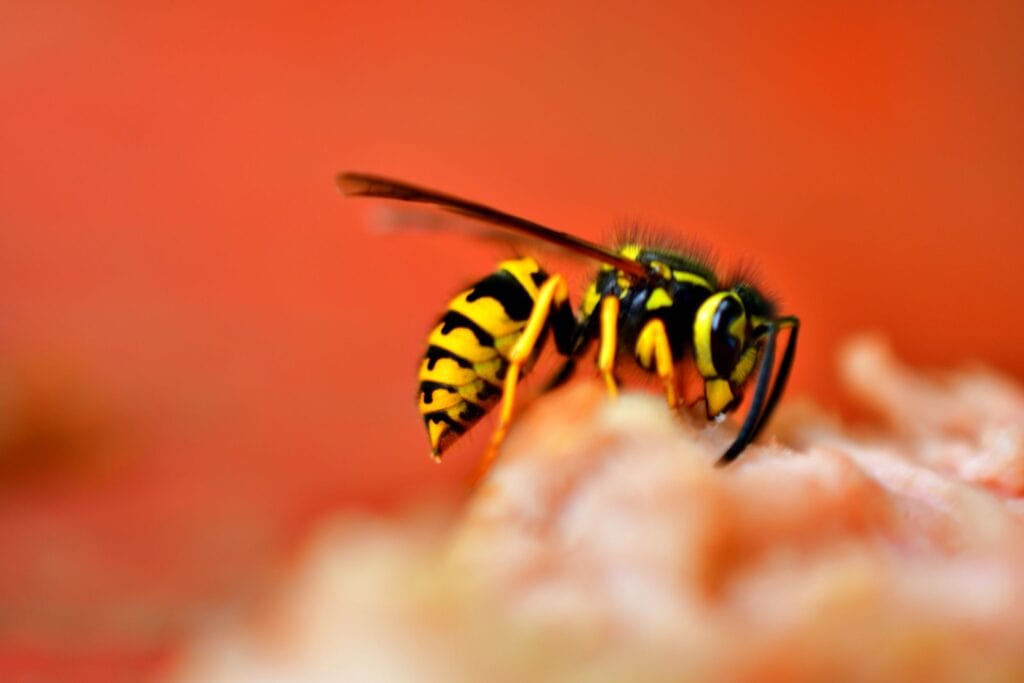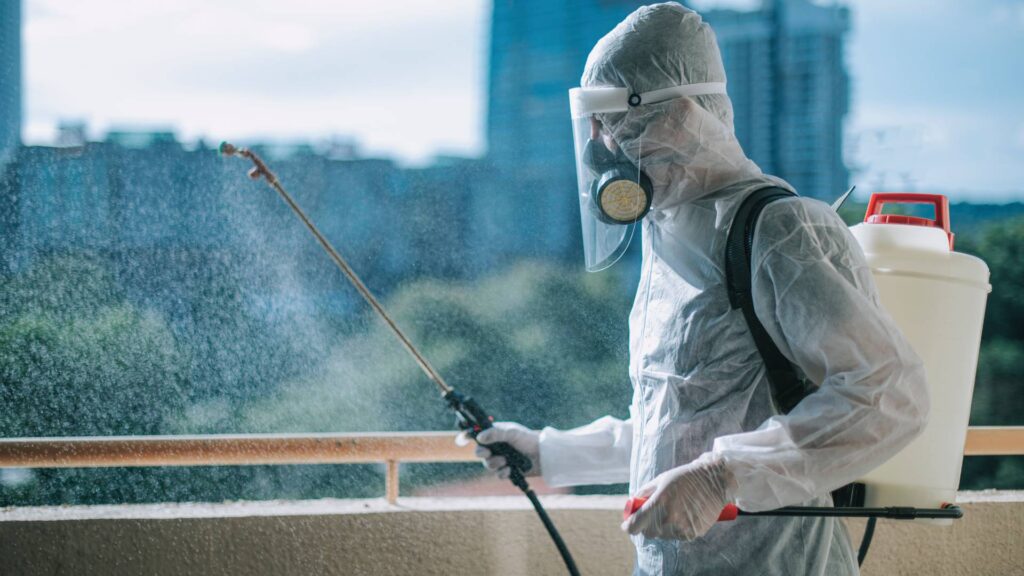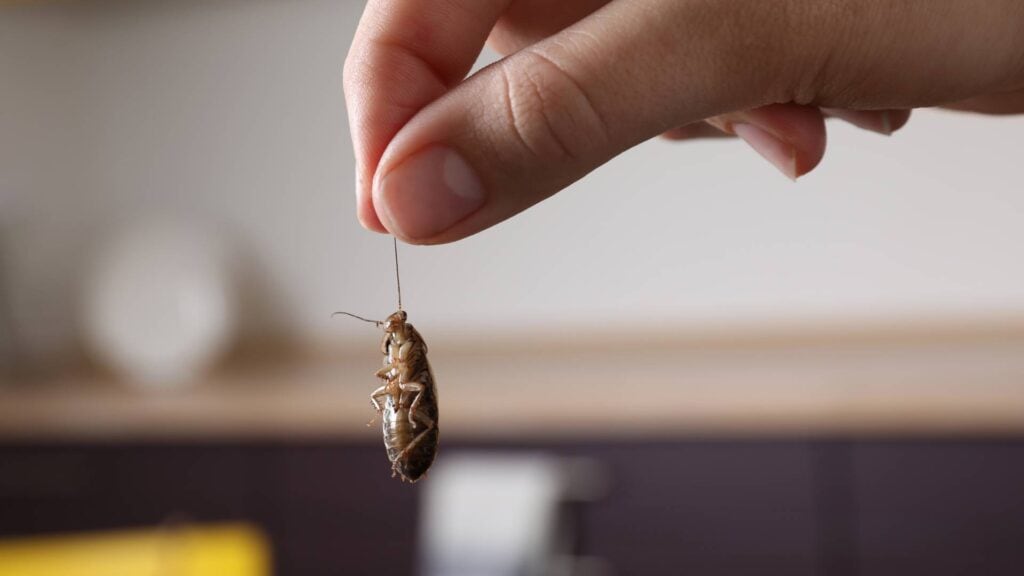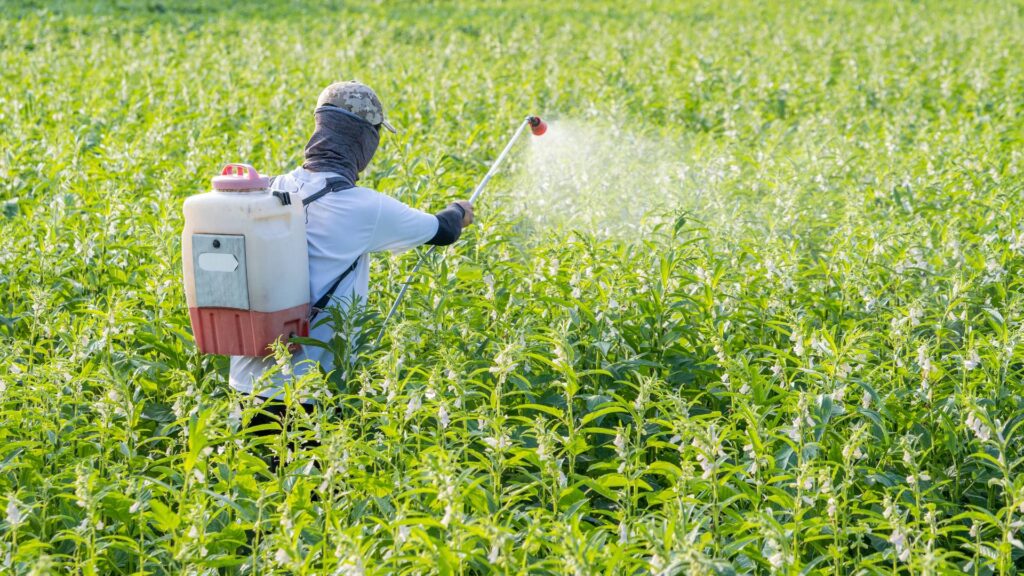Is it getting old to use dangerous chemicals and pesticides on your lawn? Do you want to keep pests out of your garden without resorting to harmful chemicals? No need to keep looking! To help you keep your yard pest-free without negatively impacting the environment, we have compiled the advice of famous horticulturists and gardeners.
In short, organic pest control involves using natural and non-toxic methods to keep pests away. Among these methods include organic sprays containing components like garlic, neem oil, peppermint oil, and companion planting, in which specific plants are planted together that naturally repel pests. It also entails encouraging biodiversity and luring insects that hunt pests to create a balanced ecology in your yard.
These pointers, however, are only the beginning. To help you maintain your yard pest-free without resorting to harmful chemicals, we've compiled a detailed guide on organic pest control methods on this page. Everything you need to know about using natural methods to repel insects and other pests is right here. So, let's check out some of the most effective natural methods of controlling yard pests so you may enjoy a garden that's good for you and the planet.
Which Insect Does The Most Damage To Gardens?
Although millions of different kinds of insects exist, some are more frequent than others. For example, pests such as aphids, mealybugs, and gnats are frequent on indoor plants, while snails, slugs, and caterpillars love a good meal in the vegetable garden.
Aphids
Indicators of an aphid infestation in your garden include:
- Leaf drops or Distorted leaves.
- Seedlings and wilted shoots
- Failure to fruit
- Sooty mould or ants
- White aphid skin casts on leaves
Mealybugs
The mealybug may be identified by its unique appearance. It mimics white cotton in appearance. The greatest analogy we can think of is cotton balls stuck to the plant's leaves.
This pest is called a mealybug because of its white, mealy growth. Mealybugs wrap themselves in this growth for protection, but it makes for an unmistakable sight on your houseplant.
It can be found hiding in the root system or at the base of the plant, where the leaves attach to the stems. Ants and sap on your houseplants are additional evidence of mealybug infestation. The mealybug is an insect that feeds on sap. They deplete the plant of all its vitality by sucking out its sap. While sucking on the sap, they secrete a sweet honeydew that attracts ants.
Black soot on the foliage is another red flag. Like a black powder, sooty mould forms on the honeydew and attracts insects. This can disrupt photosynthesis and ultimately kill the plant. In addition, the black powder completely obstructs the leaves from receiving any sunlight, starving the plant.
Gnats
The presence of gnat eggs might be a warning sign that an infestation is imminent. The larvae of fungus gnats, which hatch from eggs laid in the soil, feed on fungi that are naturally present in plant roots. Fungus gnat larvae have a length of about a quarter of an inch, a glossy black head, and a white or translucent body.
They feast on fungus and other organic materials, including the roots and seedlings of plants, leaving them looking weak and wilted. It would be best to search for a slime trail, like the ones left by slugs and snails. A telltale sign of gnats in your houseplants is a trail they leave behind. Gnats are attracted to light, so keep an eye on your windows if you have houseplants in the room.
The common fruit fly is another problem in the garden that is sometimes mistaken for a gnat, although the two insects are very different. Unlike fungus gnats, fruit flies prefer to hang around near fruit, and they appear like little, oval versions of house flies.
Caterpillars
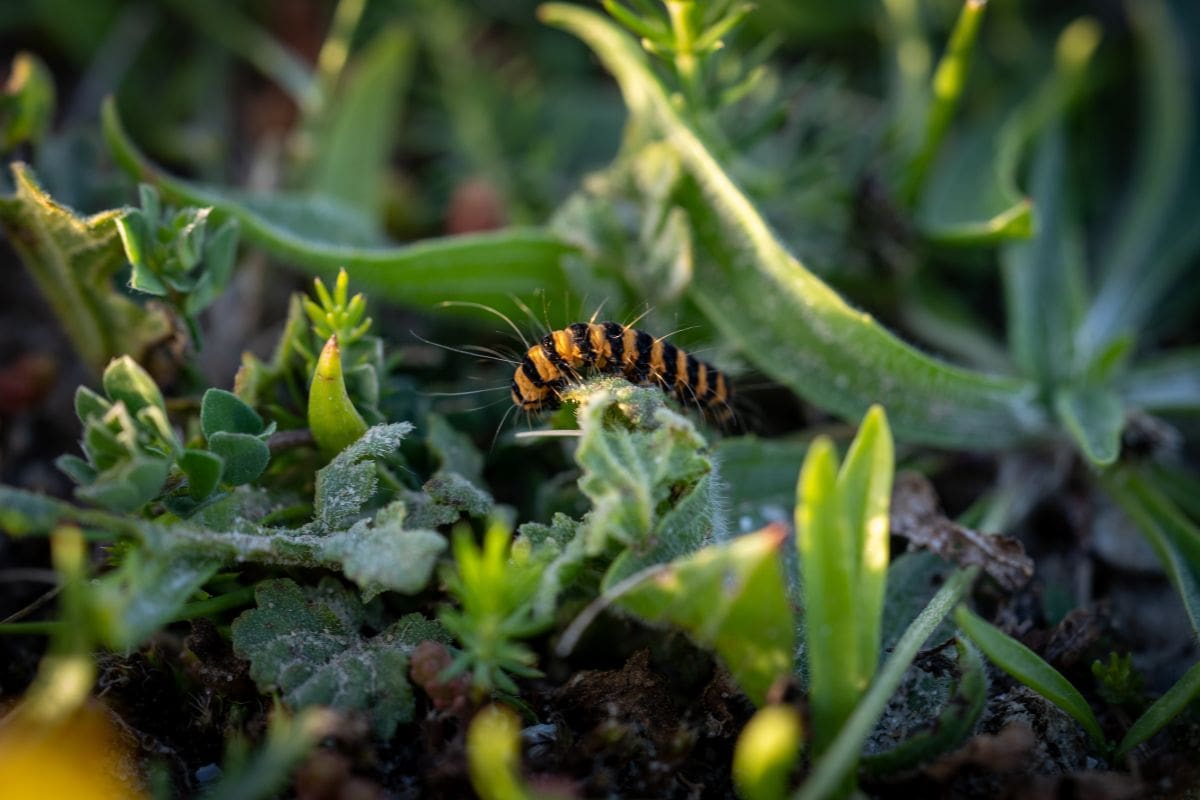
Holes in leaves that erupt out of nowhere, accompanied by a cloud of faeces, can signify only one thing: caterpillars. Unfortunately, caterpillars eat very quickly and can do a lot of damage to a plant. Use any of our three organic management techniques listed below to protect your plants from these common garden pests.
Controlling Garden Pests Naturally
Your well-tended garden has been destroyed overnight by bugs, every gardener's greatest fear. Old-fashioned, do-it-yourself approaches to pest control are a viable option. These organic insecticides might be far cheaper than their synthetic counterparts and safer for the planet.
Use Hot Peppers And Garlic To Ward Against Pests.
This staple has existed for ages, and every gardener needs a bottle. A pesticide made from garlic and chilli peppers can be used to get rid of aphids and caterpillars, two little insects that feed by sucking plant juices. If you don't have fresh chilli, powdered chilli, along with one tablespoon of vegetable oil and smashed garlic, will suffice. After letting it lie in a jar overnight:
- Drain the liquid and use it to spritz your plants.
- Keep out of the reach of kids and avoid getting it on your skin or your eyes.
- Use the concoction within two weeks of making it.
Use Eucalyptus Oil To Keep The Bugs Away
During the warmer months, dealing with mosquitoes can be one of the most frustrating elements of maintaining a garden. These pests make it harder to garden and have parties outside since they like making everyone feel uneasy. Try eucalyptus oil if you're looking for a natural alternative to DEET-based insect repellents. Also, burning a citronella candle can keep mosquitoes at bay while you and your friends enjoy the outdoors. In addition to keeping pests at bay, the candle's pleasant aroma is a nice benefit.
Grow Your Crops Wisely To Attract Beneficial Pests
To get rid of aphids in your yard, try luring their natural predators there. Herbs like mint, fennel, dill, and yarrow attract predator insects that feast on aphids. These insects include ladybirds, praying mantises, hoverflies, and lacewings. We won't get into specifics since it's graphic. However, simply growing sunflowers and dandelions may attract the correct sort of bugs.
Use Tea To Discourage Possums
The smoky aroma of Lapsang Souchong tea is offensive to opossums. This one is the oldest, strongest, and maybe smokiest black tea in the world. After brewing a few bags, you may spray the mixture on the plants damaged by possums. Mothballs and camphor blocks can also be hung about the garden as a deterrent. The odour is so offensive that the possums will deliberately avoid them.
Tips For Expert Organic Pest Control
Organic gardening employs several methods that work together to produce robust vegetation. These methods are a collection of straightforward gardening techniques that can drastically lessen the damage caused by pests and illnesses. And if an issue does arise, you may use easy, efficient solutions that will maintain the health of your land, crops, or the people who consume them.
The first step in controlling unwanted pests and illnesses is always to confirm their existence. Ninety-five per cent of garden bug species are either helpful (they eat plant pests) or innocuous (they don't hurt anything). When pests and diseases inflict severe damage to crops, you should only resort to spraying. Careless spraying can have unintended consequences, including the elimination of useful insects.
Proper Gardening Techniques
It has long been understood that vulnerable plants are more likely to be attacked by pests. By nourishing your soil, you encourage the growth of robust plants that yield abundant harvests and serve as a deterrent to pests.
Chemical fertilisers high in nitrogen that work quickly should be avoided. The fast flush of sappy, delicate growth that these fertilisers stimulate in plants is a magnet for insects and illnesses, and they also harm the micro-organism and earthworm populations in the soil.
In addition to supplying a wide variety of nutrients, compost and well-rotted manures are also abundant in beneficial microorganisms. The health of your garden will improve greatly if you apply compost to the soil regularly. The ground should be workable with bare hands. Use liquid fertiliser made from seaweed or fish if your crop needs a boost. Both are nutrient-rich and can spur rapid, healthy development.
Water
Crops that are already struggling due to drought are easier targets. However, if you work enough compost into the soil and use organic mulches, you may cut your plants' water needs in half. Given the consequences of climate change, this is of paramount importance.
Morning irrigation can aid in the prevention of fungal infections by allowing crops to dry out before nightfall. However, to prevent soil compaction and the development of fungal infections, you should stay off the garden beds when the soil and plants are damp.
Mulching also insulates the soil, which prevents the soil from experiencing extreme daily temperature swings. These variations, especially in the summer, inflict stress on plants and make them more vulnerable to assault. In addition, soil-borne pathogens like Botrytis are suppressed by mulching by eliminating soil splash.
Sunlight And Air
High humidity is conducive to the growth of pests and illnesses. Thus, plants need to have access to plenty of airflow and sunlight. Good site selection, regular pruning, and other forms of training may help increase breezes across an area.
Sanitation

Get rid of your yard trash right away. Never add disease-causing waste to the compost pile, or you risk spreading the problem again.
Solarisation
To heat-sterilize the soil, cover the contaminated area with black plastic and seal the borders for weeks.
Crop Rotation
It is important to rotate crops in the garden to prevent the accumulation of pests and illnesses. Make a plan for the yearly planting cycle and keep it in a safe place. Waiting at least three years between plantings of similar crops like brassicas is recommended.
Attract Natural Predators
Beneficial insects like lacewings, hoverflies, and ladybirds can help keep pest populations down or at bay in your garden. In addition, there are a lot of businesses where you may buy and deploy biological controls, which are specialised populations of predatory insects like ladybird larvae and predatory mites.
Right Time, Right Crops
Planting crops that aren't suited to your environment or require a pH that's drastically different from the pH of your soil is a certain way to fail. Because of this, they will be more vulnerable to pests and illnesses. For instance, diamondback moths are far more likely to attack brassicas if planted in the summer.
Avoid Monocultures
Widespread planting of a single crop is like throwing a party for pests and illnesses. Planting tiny patches of different crops beside one another and plants that attract good bugs is called intercropping.
Pick Disease-Resistant Plants
Suppose you can plant disease-resistant non-hybrid types. Even though some hybrids have resilience, most are grown only once for commercial purposes. They also produce off-type offspring when planted. Gardeners worldwide have taken a keen interest in heirloom cultivars, which have been prized for generations for their consistency, robustness, resilience, and flavour.
Companion Planting
Various plant exudates, such as essential oils, are responsible for the beneficial effects of companion planting. Insect pests' capacity to zero in on specific plants is one such method. Planting catnip or anise in your vegetable garden will help ward against pests like weevils and squash bugs.
Conclusion
Garlic, neem oil, peppermint oil, and other all-natural ingredients can be found in organic sprays used for pest management, along with other techniques like companion planting. It also attracts insects that consume pests, increasing biodiversity and helping to maintain a healthy ecosystem in the yard. Dropping or twisted leaves, stunted growth of seedlings and young shoots, lack of fruit, the presence of sooty mould or ants, white aphid skin casts on leaves, and mealybugs, which look like tiny white cotton balls, are all signs of an aphid infestation. Infestations of mealybugs typically occur at the plant's roots or at the point where the leaves join the stalks. Mealybug infestations also manifest as ant activity and visible sap on the plant.
If soot gets on the leaves, it can prevent the plant from producing food through photosynthesis. The presence of gnat eggs is another indicator of a problem. Keep an eye on the windows in rooms with houseplants since gnats are drawn to light. Caterpillars and fruit flies are two typical garden pests that can cause significant damage. Controlling garden pests naturally with organic insecticides, or using hot peppers and garlic to deter pests, are examples of organic management approaches that can help protect plants from these pests.
You can also use crushed garlic, vegetable oil, and chilli powder. The organic pest management strategies described here are the book's most vital information. Easy, effective remedies to preserve the health of the land, crops, or people who consume them include things like utilising eucalyptus oil, burning a citronella candle, cultivating crops smartly to attract beneficial pests, drinking Lapsang Souchong tea to dissuade possums, and so on. The application of organic gardening practises, which are a set of relatively simple methods, can significantly reduce the destruction caused by pests and diseases. The first step in eradicating pests and diseases is to verify their presence.
Using the right gardening methods will result in healthy plants that repel pests and produce bumper crops. Nitrogen-rich chemical fertilisers should be avoided in favour of compost and well-rotted manures, which are loaded with helpful microorganisms. Compost and organic mulches can help plants retain moisture for longer periods of time, and morning irrigation can help prevent fungal diseases.
Preventing pests and diseases requires a variety of techniques, including mulching, ventilation, sanitation, solarisation, crop rotation, luring natural predators, planting at the correct time, planting the proper crops, intercropping, selecting disease-resistant plants, and companion planting. Mulching also insulates the soil, which protects plants from soil-borne infections like Botrytis and from daily temperature changes that might damage them.
Light and fresh air can also help keep bugs and illnesses at bay. Clean water and proper sanitation are also crucial. Pests and diseases can be reduced by rotating crops every few years. The best ways to keep pests and diseases at bay include using natural predators, planting at the proper time, growing the right crops, using intercropping and companion planting, and selecting disease-resistant varieties.
Content Summary
- Organic pest control involves using natural and non-toxic methods to keep pests away.
- Among the methods include organic sprays containing components like garlic, neem oil, and peppermint oil, and companion planting, in which specific plants are planted together that naturally repel pests.
- Encouraging biodiversity and luring insects that hunt pests to create a balanced ecology in your yard is also part of organic pest control.
- Some of the most common pests that can damage gardens include aphids, mealybugs, gnats, and caterpillars.
- Aphid infestation in gardens can cause leaf drops, distorted leaves, failure to fruit, sooty mould or ants, and white aphid skin casts on leaves.
- Mealybugs can be identified by their white cotton-like appearance that wrap around plants for protection. They feed on sap and leave black soot on foliage that can disrupt photosynthesis and ultimately kill the plant.
- Gnats can leave a trail behind and are attracted to light. Fungus gnat larvae can feed on fungi that are naturally present in plant roots, leaving them weak and wilted.
- Caterpillars can cause holes in leaves that can quickly damage plants.
- Old-fashioned, do-it-yourself approaches to pest control using natural insecticides can be cheaper and safer for the planet than synthetic counterparts.
- A pesticide made from garlic and chilli peppers can be used to get rid of aphids and caterpillars.
- Eucalyptus oil can be used to keep mosquitoes away.
- Citronella can also be burned as a natural alternative to DEET-based insect repellents.
- Introducing beneficial insects like ladybugs, lacewings, and praying mantises can help control pests.
- Using floating row covers, sticky traps, and physical barriers can also help control pests.
- Removing infested plant parts, rotating crops, and using compost and mulch can help prevent pests from returning.
- Proper watering and fertilisation can help maintain plant health and deter pests.
- Handpicking pests like slugs, snails, and caterpillars can be effective in controlling their populations.
- Companion planting can help repel pests naturally by planting certain plants together.
- Planting herbs like basil, thyme, and mint can repel pests like mosquitoes, ants, and flies.
- Allowing some weeds to grow can provide a habitat for beneficial insects that control pests.
- Encouraging birds to visit your yard can help control pests.
- Using traps like beer traps, pheromone traps, and light traps can attract and kill pests.
- Neem oil can be used to repel and kill pests.
- Garlic can be used as a natural insect repellent by planting it near susceptible plants or adding it to compost.
- Diatomaceous earth can be sprinkled around plants to create a physical barrier that dehydrates and kills pests.
- Soap sprays made from mild liquid soap and water can be used to control soft-bodied pests like aphids and mealybugs.
- Vinegar can be used as a natural weed killer and to control pests like slugs and snails.
- Essential oils like peppermint, clove, and thyme can be used to repel pests.
- Beneficial nematodes can be introduced to the soil to control pests like grubs and cutworms.
- Proper maintenance of garden tools and equipment can prevent the spread of pests and diseases.
Frequently Asked Questions About Organic Pest Control
Organic pest control techniques use natural methods to manage pests in a garden or farm without using synthetic chemicals. Here are some examples:
- Crop rotation - This involves planting different crops in a particular area in a specific sequence to prevent the buildup of pests in the soil.
- Companion planting - Planting different crops together that have natural pest-repelling properties, such as planting marigolds alongside vegetables to deter aphids.
- Beneficial insects - Encouraging the presence of beneficial insects in the garden, such as ladybugs and lacewings, which prey on pests like aphids and mites.
- Natural repellents - Using natural substances such as garlic, neem oil, or vinegar to repel pests.
- Traps - Using traps like sticky traps, pheromone traps, or light traps to catch and remove pests from the garden.
- Physical barriers - Using physical barriers like row covers or netting to protect plants from pests.
- Handpicking - Removing pests from plants by hand.
- Soil management - Maintaining healthy soil by adding compost, mulch, and other organic matter to help plants grow stronger and resist pests and diseases.
Our top organic pesticide pick for gardeners who are hoping to keep things natural is Monterey LG 135 Garden Spray, for its ease of use and spreadability. For a budget pick, we recommend Natria Neem Oil Spray, which is equally effective and also has a pleasant scent.
Managing plant pests and diseases requires employing various techniques, contingent on the specific pest or disease involved. Several methods that are commonly used include:
- Cultural practices - Cultivating good cultural practices, like proper irrigation, soil management, and maintaining healthy plant conditions, can thwart pests and diseases from attacking.
- Biological control - Natural predators or beneficial organisms, like ladybugs, praying mantises, or nematodes, can be utilized to manage pests.
- Chemical control - Chemical pesticides or fungicides can be applied to combat pests and diseases. Proper care must be taken while using these products, adhering to the instructions on the label and being aware of their environmental impact.
- Integrated pest management (IPM) - An effective management approach that combines various techniques, such as cultural practices, biological control, and chemical control, to address pests and diseases.
- Quarantine - Isolating plants or soil that could be contaminated with pests or diseases can prevent their spread to other plants.
- Sanitation - Eliminating diseased plants and plant debris from the garden or farm can curb the proliferation of diseases.
- Genetic resistance - Utilizing plant varieties that are immune to specific pests or diseases.
- Organic methods - Using natural methods, like crop rotation, companion planting, and natural repellents, to control pests and diseases without using synthetic chemicals.
Ladybugs, lacewings, and praying mantises are all examples of beneficial insects that can eat pest insects like aphids or caterpillars.
Healthy soil can help plants grow stronger, which makes them less susceptible to pests and diseases. Adding organic matter like compost or using natural fertilizers can also help promote healthy soil.

